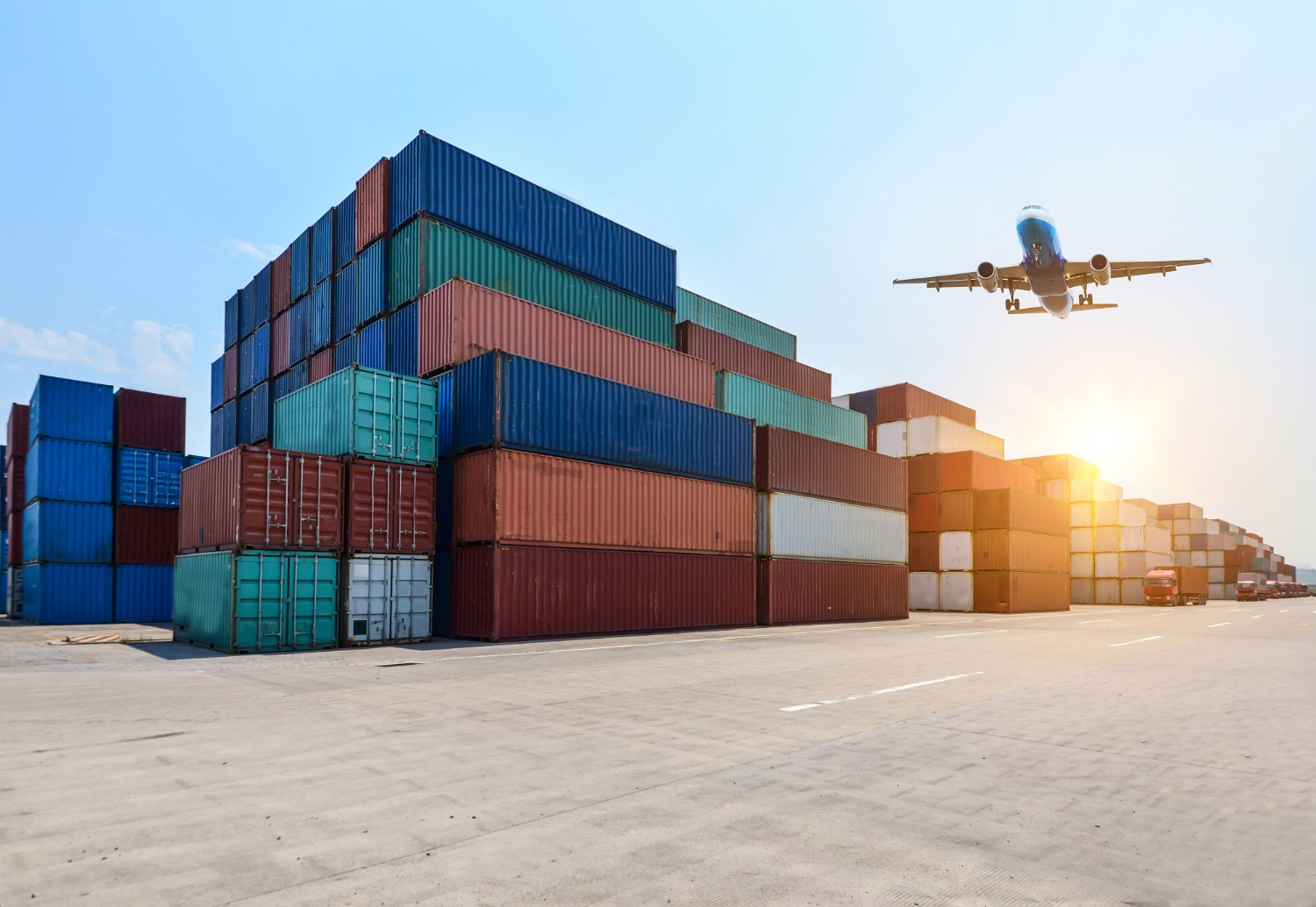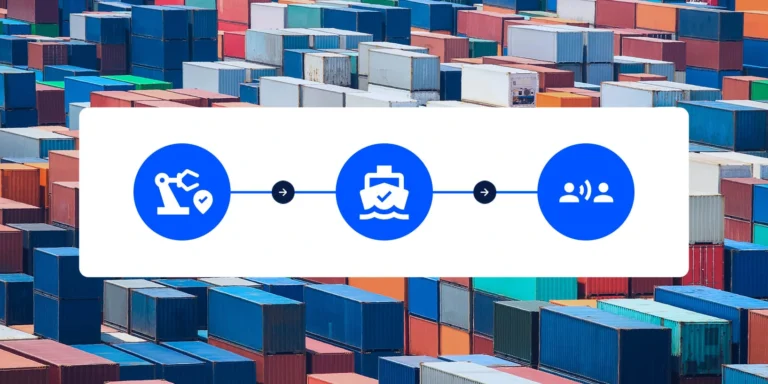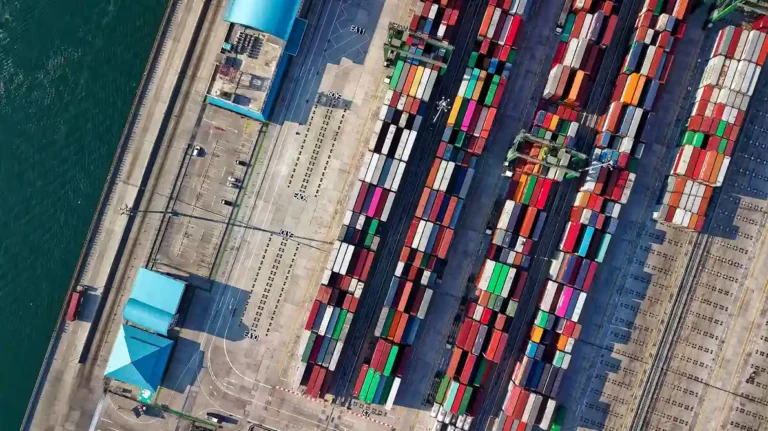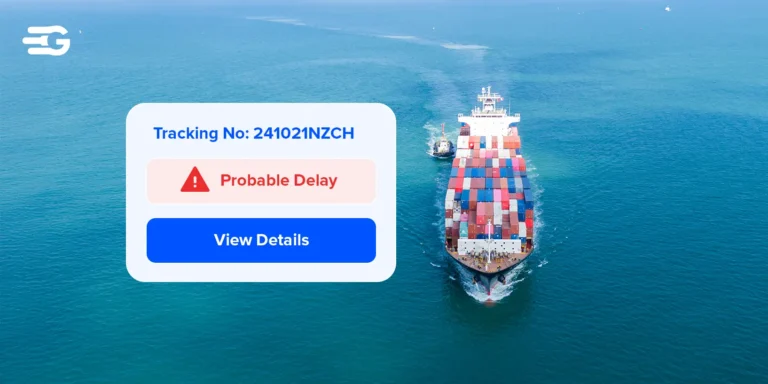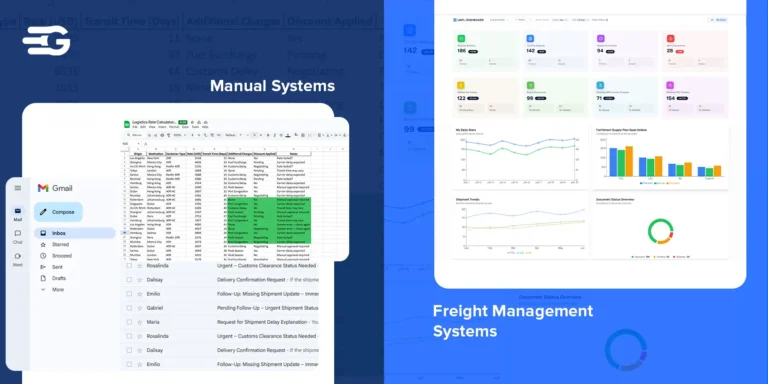Top 12 Transportation Management Systems for Mid-Market Businesses
Transportation management systems for mid-market businesses are essential tools for managing logistics efficiently. In a competitive environment, these systems help enterprises cut costs, improve operational efficiency, and stay ahead. This blog highlights 12 top-rated TMS solutions designed to meet the unique needs of mid-market businesses.
Criteria for Choosing the Best Transportation Management Systems For Mid-Market
Selecting a TMS requires careful evaluation to address the unique challenges of mid-market businesses managing large-scale shipments. Here’s what to prioritize when choosing the best system:
- Scalability: Ensure the TMS accommodates growth, allowing seamless addition of new locations, carriers, and shipment volumes without performance issues.
- Ease of Use: A user-friendly interface is essential for quick adoption by teams and minimal training requirements.
- Integration Capabilities: The system should integrate effortlessly with existing tools like ERP, WMS, or CRM platforms, enabling smooth data flow across the supply chain.
- Cost-Effectiveness: Opt for solutions that balance features and affordability, providing significant ROI without overspending.
- Real-Time Visibility and Analytics: Advanced tracking and reporting tools offer actionable insights, helping businesses optimize routes, reduce delays, and cut costs.
- Reliable Support: Access to round-the-clock customer support minimizes operational disruptions and ensures prompt issue resolution.
Best Transportation Management Systems for Mid-Market
| TMS Name | Best For | Pros | Cons |
| GoComet | Complex logistics, real-time visibility | – Real-time visibility- Easy integration with existing systems- Multi-modal shipping support | – Learning curve for new users |
| Oracle TMS | Large, complex supply chains | – Powerful analytics and reporting- Scalable and flexible- Strong integration with ERP systems | – High cost of implementation- Steep learning curve |
| Shipsy | Global supply chains, user-friendly interface | – User-friendly interface- Strong customer support- Real-time tracking | – May require additional customization- Higher cost for advanced features |
| SAP TMS | Enterprises, deep ERP integration | – Deep integration with SAP ERP- Strong global reach- Robust reporting and analytics | – Expensive for mid-market businesses- Complex setup and customization |
| MercuryGate | Scalable, multi-modal logistics solutions | – Cloud-based, scalable- Multi-modal support- Strong analytics and visibility | – Complex configuration- May require heavy customization |
| Kuebix TMS | Modular, scalable, quick onboarding | – Modular and scalable- Easy to integrate with other systems- Quick onboarding and ROI | – Limited freight account support- Needs improvement in shipment tracking |
| Manhattan Active TMS | Mid to large enterprises | – Cloud-native and flexible- Real-time data and analytics- Strong planning and optimization | – High cost for small businesses- Complex implementation process |
| E2Open | Global businesses, data sharing | – Cloud-based, scalable- Advanced collaboration tools- Supports global operations | – High upfront cost- Steep learning curve |
| 3Gtms | Flexible, customizable logistics solutions | – Flexible and customizable- Cloud-based solution- Robust routing and optimization | – UI not as modern as competitors- Requires advanced configuration |
| Uber Freight TMS | Small-to-mid companies, easy-to-use platform | – Quick and easy to use- Real-time visibility and tracking- Integrates with Uber Freight network | – Limited advanced analytics- Limited customization options |
| Blue Yonder | Enterprises, optimization and forecasting | – Strong optimization and forecasting- Multi-modal support- Real-time visibility | – FOM/TMS bridge reliability issues- UI can be complex |
| Trimble | User-friendly, scalable cloud solutions | – Easy to use interface- Strong customer support- Cloud-based, scalable | – Slow issue resolution- Issues with backend changes |
Top 12 Transportation Management Systems For Mid-Market Businesses
1. GoComet
GoComet is an AI-powered transportation management system designed to streamline logistics for businesses of all sizes. It automates freight management, enhances real-time shipment tracking, and provides advanced analytics to optimize supply chain operations.
GoComet’s platform integrates seamlessly with existing systems, offering features like route optimization, carrier negotiation, and automated data management to reduce transportation costs and improve efficiency.
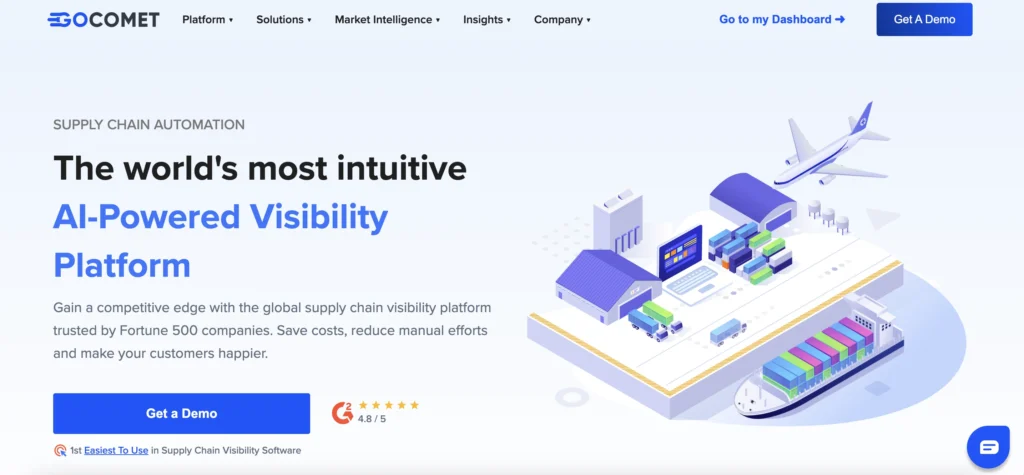
Key Features
- AI-Powered Visibility: GoComet leverages AI to provide end-to-end visibility of shipments. This includes real-time status updates, dynamic predictive ETAs, and live shipment tracking, enabling businesses to optimize their supply chain operations with confidence.
- Freight Procurement Automation: The platform automates freight procurement processes, helping businesses secure the best deals while avoiding overpayment. This ensures cost-effective logistics management.
- Detailed Analytics for Bottleneck Identification: GoComet’s advanced analytics identify inefficiencies in the supply chain, offering actionable data to streamline workflows and improve operational performance.
- Seamless Collaboration and Document Management: The system facilitates team collaboration with automated data exchange and provides cloud-based document storage for easy access to shipment records, invoices, and other critical documents.
Limitations:
- Dependence on Internet Connectivity: The system’s functionality relies on stable internet connections, which could be a constraint in regions with limited connectivity.
Ratings (as of January 2025):
- G2: 4.8/5
- Gartner: 5/5
Testimonials:
“With Gocomet, our profits has been increasing. We get the best rates from freight forwarders resulting in huge profits. We can also use the reports that can be downloaded from the platform to get the complete analysis of our savings, vendor’s participation and much more.”
2. Oracle
Oracle Transportation Management (OTM) is a comprehensive, cloud-based solution designed to manage all transportation activities across global supply chains. It enables mid-market businesses to enhance logistics operations, reduce freight costs, and improve service levels.
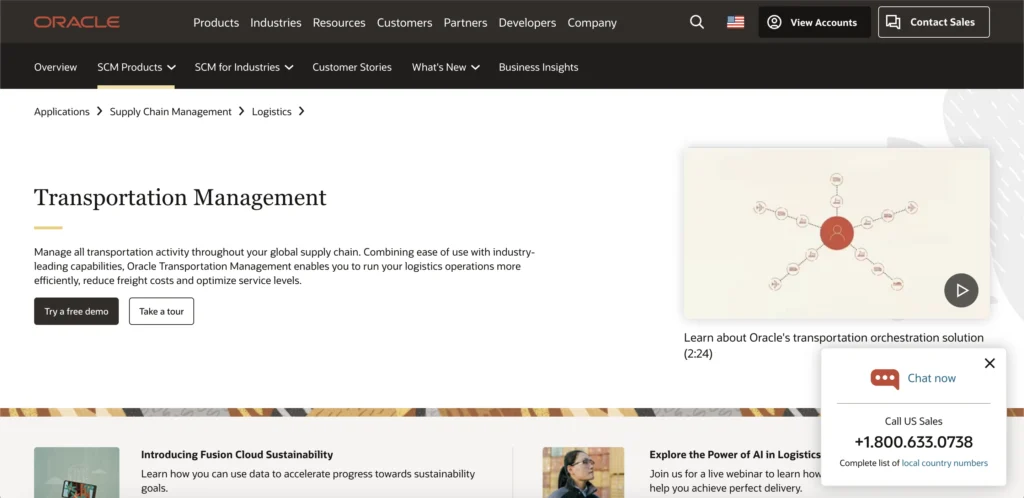
Key Features:
- Operational Planning: OTM optimizes logistics networks by determining the most efficient ways to fulfill transportation requirements, from simple point-to-point deliveries to complex multimodal operations.
- Transportation Sourcing: The platform streamlines the bidding process by allowing collaboration with logistics service providers and shipping partners, ensuring efficient planning for inbound, outbound, and interfacility orders.
- Fleet Management: OTM integrates fleet-specific planning and optimization, managing all orders and shipments in a single system that considers both contract and private transportation resources.
- Freight Payment and Billing: The system automates freight billing and payment processes, consolidating transportation orders from multiple sources and eliminating redundant settlement procedures.
Limitations:
- Limited Customization for Large-Scale Industries: Oracle’s SCM Cloud lacks easy customization, making it more suitable for small-scale businesses and challenging for larger enterprises to adapt to specific needs.
- Difficulty with Cross-Functional Reporting: Users struggle with developing integrated reports, which impacts the ability to gather insights across different departments efficiently.
Ratings (as of January 2025):
- G2: 4/5
- Gartner: 4.7/5
Testimonials:
“The best part is Security and the performance. As usual…every product needs enhancements…so this product for sure need some additional functionalities which would help different types of businesses.”
3. Shipsy
Shipsy offers an AI-powered platform that optimizes end-to-end logistics and supply chain operations for global businesses, enhancing efficiency across first, middle, and last-mile operations. Shipsy’s solution is well-suited for organizations seeking scalability and operational visibility, particularly in logistics, retail, and manufacturing industries.
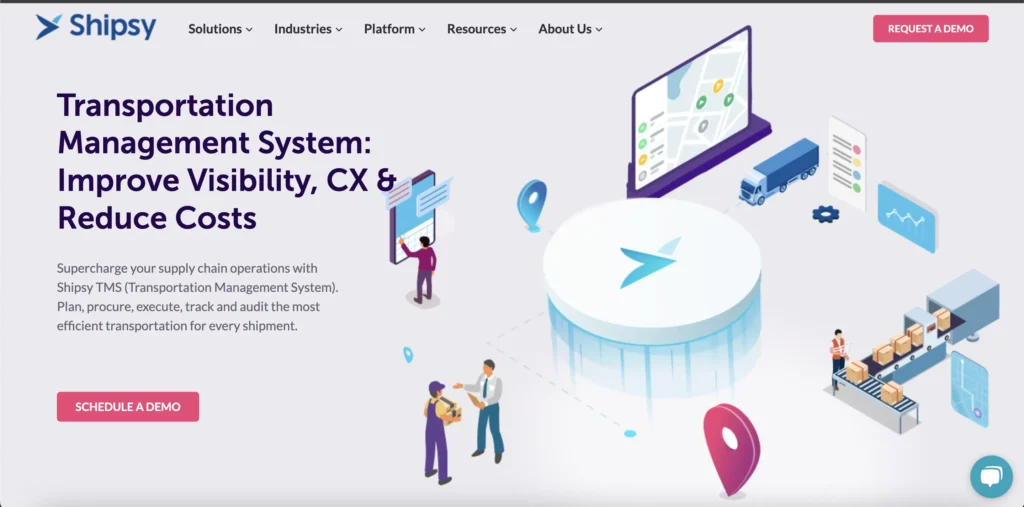
Key Features:
- Real-Time Shipment Tracking: Get immediate updates on the status and location of shipments, ensuring better visibility and faster issue resolution across the supply chain.
- Optimized Route Planning: Automatically calculate the most efficient delivery routes, cutting down transportation costs and improving delivery times.
- Seamless Carrier & 3PL Integration: Effortlessly manage third-party logistics providers and carriers, improving communication and collaboration with your partners.
- Automated Workflow Management: Streamline routine tasks with automation, reducing manual errors and boosting overall efficiency in logistics operations.
Limitations:
- Integration Challenges: Integrating Shipsy with existing systems or third-party applications can be complex, potentially requiring additional resources and time.
- Limited Customization for Large Enterprises: Some users have reported that Shipsy may not offer the level of customization needed for large-scale industries, which could hinder its adaptability to specific operational requirements.
Ratings (as of January 2025):
- G2: 4.5/5
- Gartner: 4.9/5
Testimonials:
“In my last 3 or 4 years of experience with Shipsy, I didn’t find any major issues for disliking their services. If they can improve the compatibility of their apps with the latest Android versions and provide apps for iOS, then there’s nothing negative.”
4. SAP
SAP Transportation Management is a robust solution that integrates fleet and logistics management across your network. It reduces complexity and increases efficiency, making it suitable for mid-market businesses aiming to enhance their supply chain operations. By automating processes and facilitating digital collaboration, SAP helps businesses meet sustainability goals and improve on-time delivery rates.
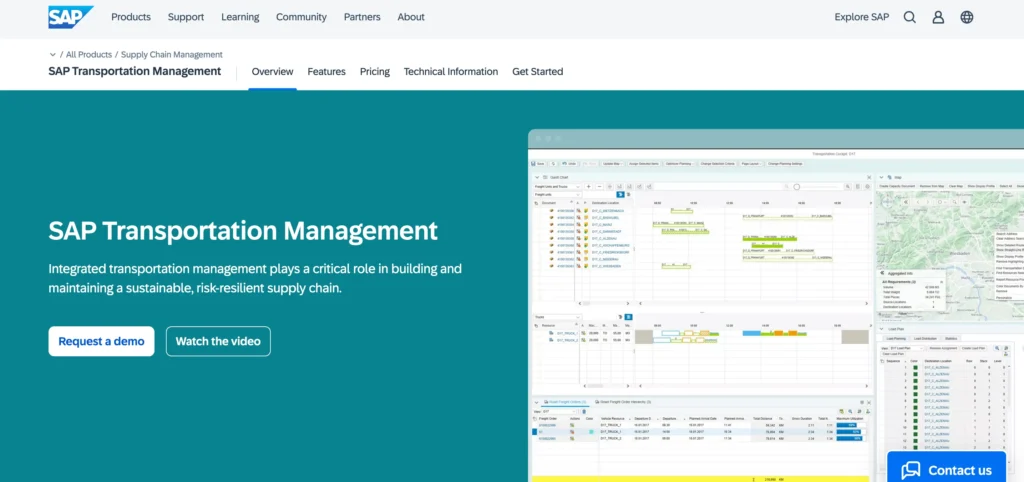
Key Features:
- Strategic Freight Management: Streamlines the quote-to-contract process and automates rate determination, enhancing efficiency in managing freight operations.
- Order Management: Provides real-time responses and aligns sales and orders with integrated intelligence, ensuring seamless order processing.
- Transportation Planning: Optimizes goods movement and delivery activities, offering clear visibility to improve logistics efficiency.
- Interactive Freight Tendering: Facilitates efficient collaboration with carriers through interactive tendering processes, ensuring optimal carrier selection and cost management.
Limitations:
- Complex Implementation and Integration: SAP TM’s setup can be time-consuming, with rigid integration processes requiring significant expertise. Simplifying these aspects would enhance user experience.
- Limited Adaptability for Advanced Logistics: The system struggles with customization for complex logistics needs, limiting its suitability for businesses seeking high-level optimization.
Ratings (as of January 2025):
- G2: 4.1/5
- Gartner: 4.4/5
Testimonials:
“The product seems to be better in a demo than then in the user experience. Having several points to setup the results depends on the consultant but the support from SAP wasnt good at all in order to guide the process. Dissapointed.”
5. MercuryGate
MercuryGate offers a comprehensive transportation management system (TMS) designed to optimize logistics for mid-market companies. Their solution integrates planning, execution, and visibility to streamline operations, reduce costs, and enhance productivity.
With a strong focus on automation, visibility, and compliance, MercuryGate supports global sourcing and trade compliance to ensure smooth, sustainable operations across diverse industries.
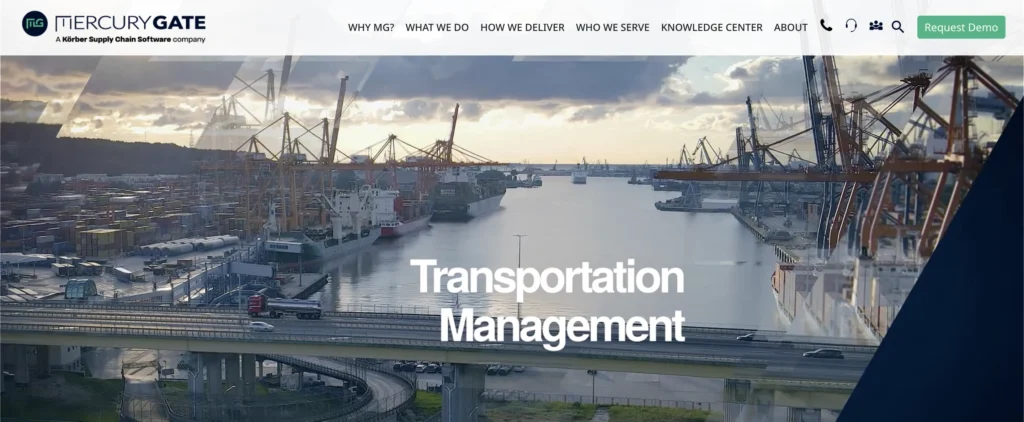
Key Features:
- Multimodal Optimization: Enable cost-effective and efficient use of different transportation modes to improve logistics operations.
- Real-Time Shipment Tracking: Monitor shipments in real-time, ensuring proactive adjustments and better control of operations.
- Workflow Automation: Automate routine tasks, reducing manual errors and boosting efficiency across supply chain processes.
- Efficient Final Mile Management: Optimize last-mile deliveries, ensuring timely and accurate product arrivals to customers.
Limitations:
- Limited Search Functionality: Users find the inability to search by BOL number inconvenient, making it harder to quickly locate specific shipments.
- Complex User Interface: While customizable, the interface can be unintuitive, requiring users to switch between multiple screens, which hinders efficiency and ease of use.
Ratings (as of January 2025):
- G2: 4/5
- Gartner: 4.4/5
Testimonials:
“As a legacy TMS, MercuryGate has a good reputation for flexibility in use as well as a strong logistics understanding. The glaring weakness is in their lack of a modern API, making integrations and automations very difficult to setup.”
6. Kuebix TMS
Kuebix TMS is a modular, scalable platform designed for businesses of all sizes, including mid-market companies. It offers rapid onboarding, allowing users to quickly implement and optimize their transportation management processes.
It also offers unique tools like the Shipment Builder and Appointment Scheduler to streamline logistics operations.
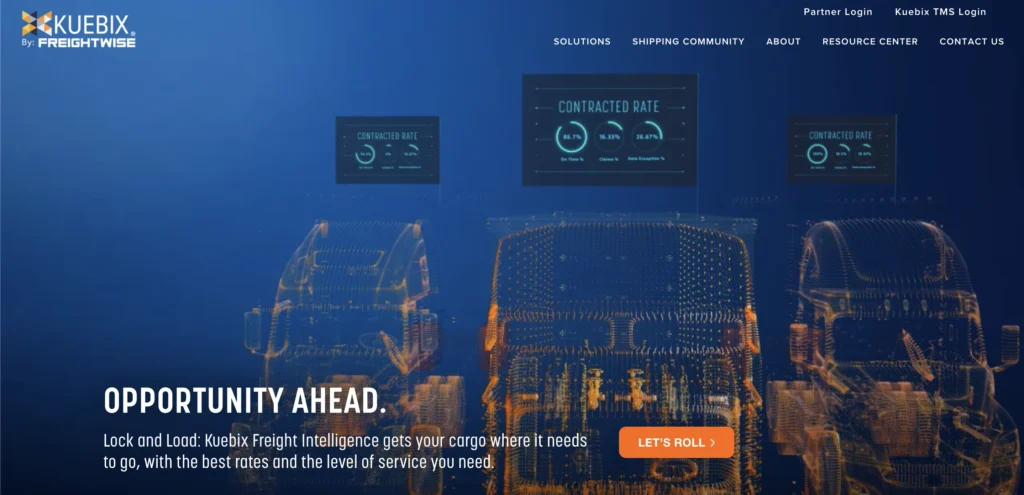
Key Features:
- Freight Optimization: Automatically compares multiple carrier rates to help you select the most cost-effective and efficient shipping option for each load.
- Real-Time Visibility: Offers continuous tracking and updates for your shipments, ensuring you can monitor progress and take action quickly if delays or issues arise.
- Claims Management: Simplifies the process of managing and tracking claims, enabling quicker resolutions and reducing administrative time.
- Integrated Reporting: Provides detailed, customizable reports to help analyze performance, identify cost-saving opportunities, and improve transportation operations.
Limitations:
- Integration Challenges: Some users have reported challenges during the initial setup of integrations with other systems, which may require additional time and resources to resolve.
- Limited Reporting Capabilities: The platform may lack advanced reporting features, necessitating manual data extraction for comprehensive analysis, which can be time-consuming.
Ratings (as of January 2025):
- G2: N/A
- Gartner: 4.6/5
Testimonials:
“Easy rate quote layout but lack of rate quote history reports that other TMS platforms offer. Also had conflicting pick up requests sent.”
7. Manhattan Active
Manhattan Active offers a comprehensive TMS that integrates transportation planning, execution, and optimization. It provides real-time visibility, advanced analytics, and supports multimodal transportation, enabling businesses to enhance efficiency and reduce costs. The platform is designed to scale with business growth, making it suitable for mid-market companies seeking robust logistics solutions.
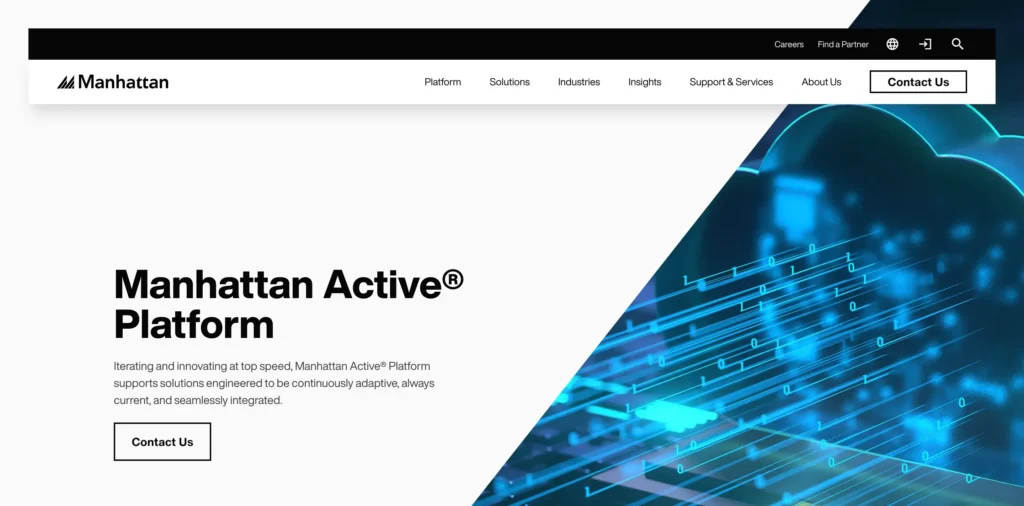
Key Features:
- Advanced Multi-Modal Optimization: Utilizes a sophisticated engine to optimize shipments across various transportation modes, ensuring cost-effective and efficient routing.
- Continuous Optimization: Employs real-time data to continuously adjust and optimize transportation plans, adapting to changing conditions and requirements.
- Unified Logistics Control: Provides a centralized platform for managing all logistics activities, enhancing visibility and control over the entire transportation process.
- Fleet Management: Offers tools to manage and optimize fleet operations, improving efficiency and reducing operational costs.
Limitations:
- Integration Challenges: Some users have reported difficulties integrating Manhattan Active TMS with certain external systems, such as courier services like Correios. These integration challenges can lead to delays in achieving full operational efficiency.
- Performance Issues in Remote Areas: Users have noted that the system’s performance can be affected in regions with slow network connections or in remote distribution centers. This can result in slower processing times and potential disruptions in transportation operations.
Ratings (as of January 2025):
- G2: 4.6/5
- Gartner: 3.3/5
Testimonials:
“While the system is now operating and we continue to utilize additional functionality the process to implement the system left us wondering if we would ever see value from the system.”
8. E2Open
E2Open delivers a cloud-based TMS that focuses on end-to-end supply chain visibility and collaboration. It offers features like demand forecasting, transportation planning, and execution, allowing businesses to optimize routes, manage carriers effectively, and improve customer service. The platform’s scalability and integration capabilities make it a strong choice for mid-market enterprises.
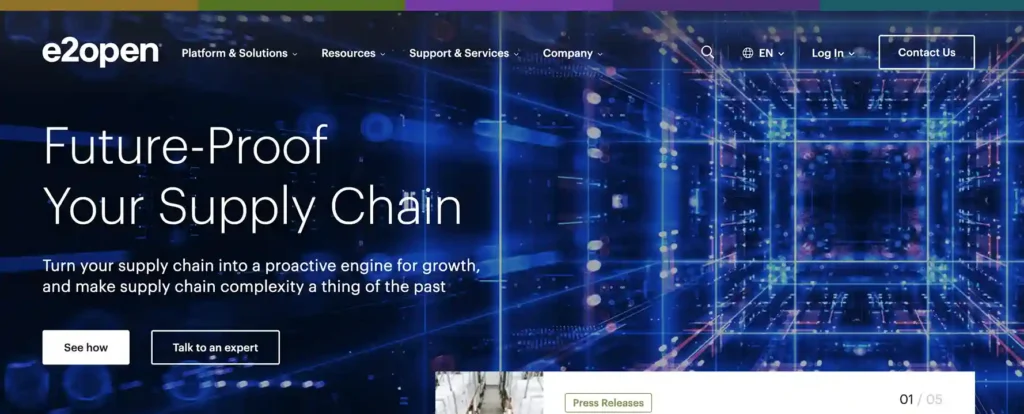
Key Features:
- Consolidated Pricing, Booking, and Tendering: Streamlines the process of obtaining rates, booking shipments, and tendering to carriers, reducing time and potential errors.
- Global In-Transit Visibility: Provides real-time tracking and visibility across all modes, enhancing the ability to monitor shipments and respond to issues promptly.
- Automated Invoice Matching and Reconciliation: Simplifies the process of matching and reconciling carrier invoices, ensuring accurate payments and reducing administrative workload.
- Intuitive User Interface: Features a user-friendly interface that reduces training time and enhances user adoption.
Limitations:
- Limited Reporting Capabilities: E2Open’s TMS lacks comprehensive reporting features, hindering effective data analysis and decision-making.
- Integration Challenges: Users have reported difficulties integrating E2Open’s TMS with other software platforms, leading to communication issues and operational inefficiencies.
Ratings (as of January 2025):
- G2: 4.1/5
- Gartner: 4.3/5
Testimonials:
“Huge network amongst the shipping fraternity. Customer care service can be bit slow at times.”
9. 3G TMS
3G TMS provides a flexible TMS that combines transportation planning and execution in a single platform. It includes features such as route optimization, carrier management, and freight auditing. The system’s user-friendly interface and scalability cater to mid-market companies looking for a cost-effective and efficient transportation management solution.
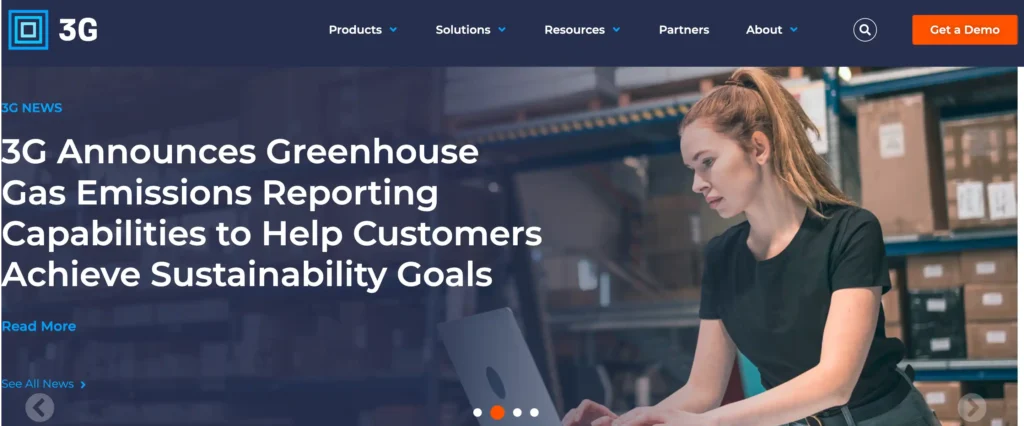
Key Features:
- Multi-Modal Transportation Management: Supports various transportation modes, including truckload, less-than-truckload, and parcel, offering flexibility in shipment planning.
- Advanced Rating and Routing: Offers sophisticated rating and routing capabilities to optimize shipment costs and delivery times.
- Carrier Management: Enables effective management of carrier relationships, including performance monitoring and contract management.
- Real-Time Tracking and Visibility: Provides real-time tracking of shipments, enhancing visibility and allowing for proactive issue resolution.
Limitations:
- Steep Learning Curve: Users have reported that the system’s complexity requires significant time and effort to master, which can delay full utilization.
- Limited Reporting Capabilities: Some users have noted that the system’s reporting features are not as robust as desired, potentially hindering comprehensive data analysis.
Ratings (as of January 2025):
- G2: 3.9/5
- Gartner: 4.5/5
Testimonials:
“Excellent technology. changes and updates are getting difficult to update the system as the platforms grows. however it has been delivering great results for our organization.”
10. Uber Freight TMS
Uber Freight offers a TMS that leverages real-time data and AI to optimize freight operations. It provides instant access to a vast network of carriers, dynamic pricing, and end-to-end shipment visibility. This platform is designed to streamline logistics processes, reduce costs, and enhance decision-making for mid-market businesses.
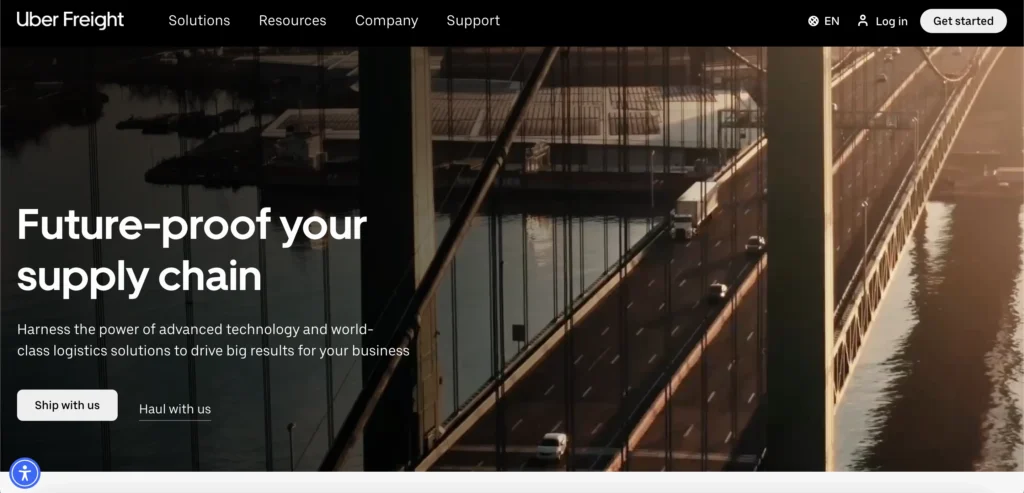
Key Features:
- Carrier Network Access: Provides access to a vast network of carriers, facilitating efficient load matching and transportation planning.
- Real-Time Shipment Tracking: Offers real-time tracking of shipments, enhancing visibility and allowing for proactive management.
- Automated Load Tendering: Streamlines the process of tendering loads to carriers, reducing manual effort and improving efficiency.
- Data-Driven Insights: Utilizes data analytics to provide actionable insights, aiding in decision-making and continuous improvement.
Limitations:
- Limited Real-Time Reporting: Users have reported a 24-hour delay in reporting availability, hindering timely decision-making. Implementing real-time reporting features could address this issue.
- Customization Constraints: Some users find the system’s customization options insufficient to meet specific business needs. Enhancing customization capabilities would allow for better alignment with unique operational requirements.
Ratings (as of January 2025):
- G2: 4.1/5
- Gartner: 4.5/5
Testimonials:
“The tool works; however, the user interface is not ‘simple’. Too many fields need to be entered to pull data. Reports are not customizable.”
11. Blue Yonder
Blue Yonder’s TMS utilizes AI and machine learning to deliver advanced transportation planning and execution capabilities. It offers features like demand forecasting, route optimization, and real-time tracking, enabling businesses to improve efficiency and customer satisfaction. The platform’s adaptability and integration with other supply chain functions make it suitable for mid-market companies.
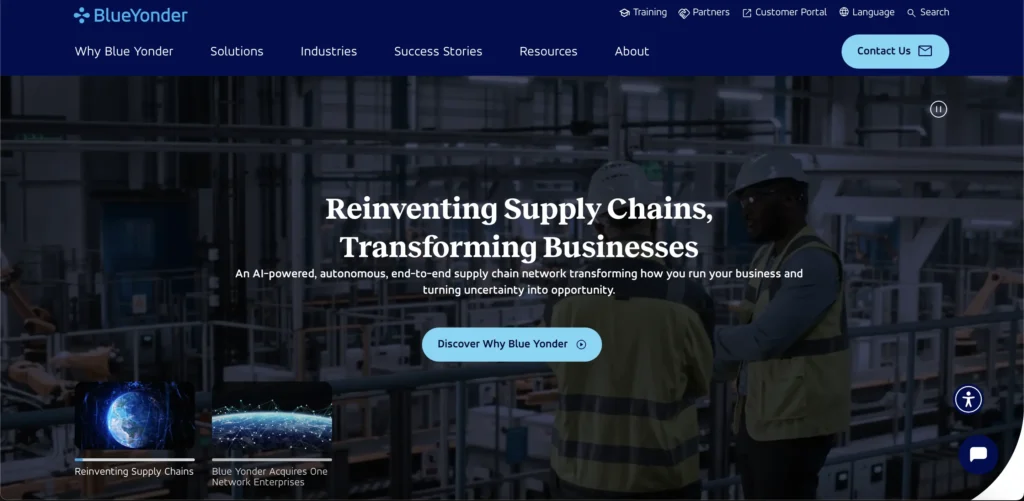
Key Features:
- Dynamic Route Optimization: Employs advanced algorithms to optimize routes in real-time, considering factors like traffic and weather.
- Carrier Collaboration: Facilitates seamless collaboration with carriers, improving communication and operational efficiency.
- Freight Audit and Payment: Automates the freight audit and payment process, ensuring accuracy and reducing administrative workload.
- Analytics and Reporting: Provides comprehensive analytics and reporting tools to monitor performance and identify areas for improvement.
Limitations:
- System Slowness and Downtime: Users report that the FOM/TMS bridge and general system availability often cause delays and operational strain, with no clear explanation for system failures. This leads to additional time and resources being spent on troubleshooting and resolving issues.
- Inflexible Load Prioritization: The system tends to randomly choose which loads are tendered, even when lane constraints are enabled. This can result in high-priority loads being skipped, forcing businesses to pay for customization to prioritize critical shipments effectively.
Ratings (as of January 2025):
- G2: 4.1/5
- Gartner: 4.1/5
Testimonials:
“Overall experience from a product perspective has been good, but the service provided could use some improvement.”
12. Trimble
Trimble provides a TMS that focuses on transportation planning, execution, and visibility. It includes features such as route optimization, carrier management, and freight auditing. The platform’s scalability and integration capabilities make it a strong choice for mid-market enterprises seeking to enhance their transportation operations.
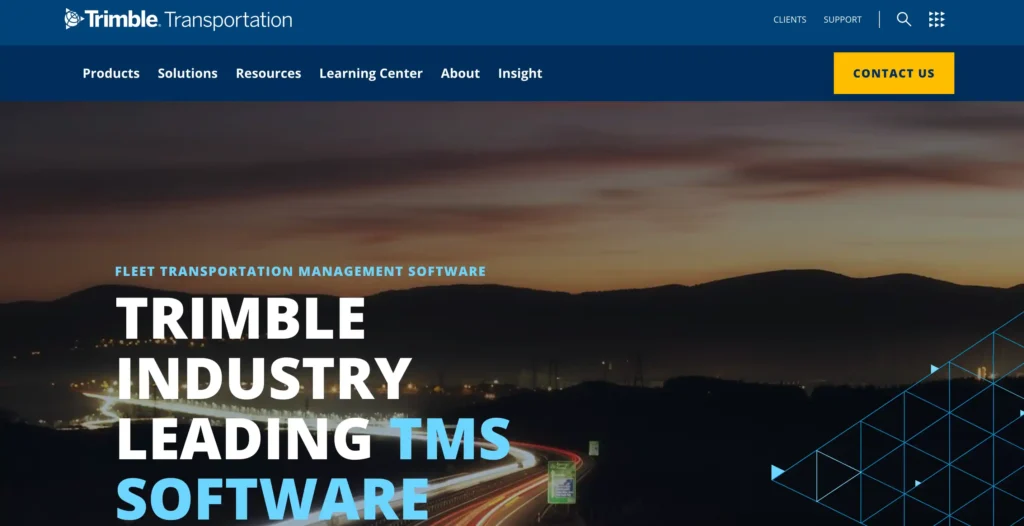
Key Features:
- Route Planning and Optimization: Utilizes advanced algorithms to plan and optimize routes, reducing costs and improving delivery times.
- Carrier Management: Enables effective management of carrier relationships, including performance monitoring and contract management.
- Real-Time Tracking: Provides real-time tracking of shipments, enhancing visibility and allowing for proactive issue resolution.
- Analytics and Reporting: Offers comprehensive analytics and reporting tools to monitor performance and identify areas for improvement.
Limitations:
- User Interface Issues: The interface is often described as outdated and unintuitive, leading to difficulties in navigation and increased training requirements.
- System Stability Concerns: Users report frequent crashes and slow performance, which can disrupt operations and necessitate additional support.
Ratings (as of January 2025):
- G2: 3.5/5
- Gartner: 4.3/5
Testimonials:
“It’s a foundations erp for OTR, it cover many use cases and it’s flexible. Old and need to be upgraded to a saas solution.”
Conclusion
Choosing the right transportation management system for mid-market businesses can drive efficiency and reduce costs. Evaluate your specific needs, compare features, and select a system that aligns with your goals. Whether it’s GoComet’s automation or SAP’s global capabilities, the right choice can transform your supply chain operations.
